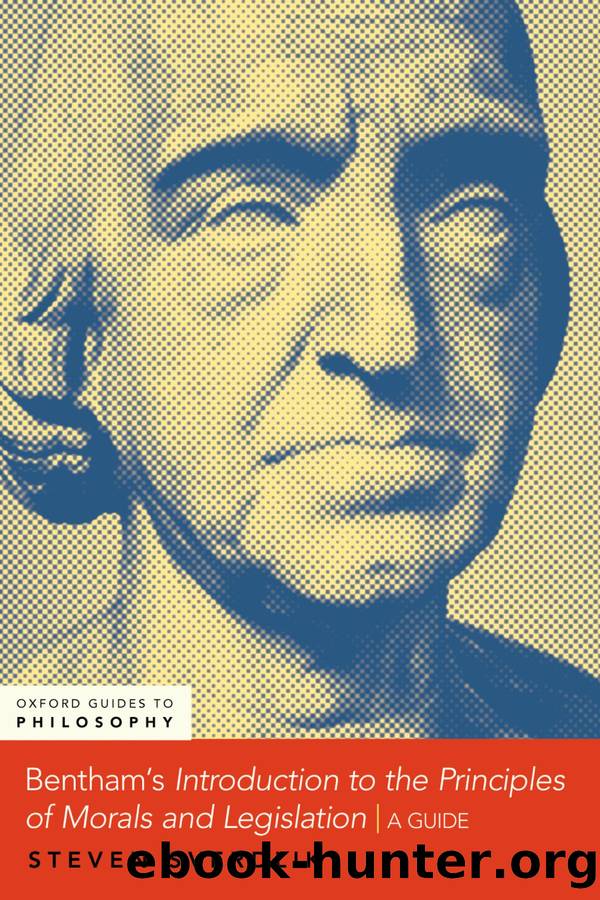Bentham's An Introduction to the Principles of Morals and Legislation by Steven Sverdlik;

Author:Steven Sverdlik;
Language: eng
Format: epub
Publisher: Oxford University Press USA
Published: 2022-06-15T00:00:00+00:00
That is, itâs part of the meaning of the word âlustâ that itâs bad.
This fact about the nature of certain kinds of words common in ethics and aesthetics was noted by Hume.10 Moral philosophers continue to be interested in these words. They now discuss the related idea of âthickâ ethical concepts.11 Bentham doesnât merely note this phenomenon in the language we use about motives: he devises a method of describing them that enables him to avoid prejudging the value of different motives. What he does is find or devise a âneutralâ term that expresses no approval or disapproval of the motive. So, instead of speaking of âlust,â for example, he speaks of âsexual desireâ; instead of âavarice,â âpecuniary interestâ (par. 13n3).
The general pattern of analysis that Bentham then presents can be understood as follows. Each of the twelve motives has a certain end. Various actions are described that are different ways of producing the end. Some of these actions have good consequences, some bad consequences, some indifferent or overall neutral consequences.
Itâs noteworthy that in the examples Bentham gives of acts from various motives, he generally doesnât say that the agentâs end is her own pleasure, or the pleasure or pain of another person. In one example of the motive of self-preservation he does say that you steal a loaf of bread âto put an end of the pain of hungerâ (par. 27). But most of the examples where an end is stated are described differently. Agents are said to do various things âfor moneyâ (par. 19), for example, or âto gain a place in administrationâ (that is, a position in government) (par. 23). It seems that Bentham is speaking loosely in his description of the ends people have in acting, and that his âofficialâ position about them, as it were, is presented in sections i and ii.
As an example of Benthamâs pattern of analysis, consider paragraph 28. He describes three types of act that the âlove of ease,â or dislike of exertion, can lead to: a parentâs failing to feed his child; escaping from slavery; making tending to a machine less difficult. He notes that thereâs an apparent paradox in a love of ease leading a person to do work, as in the last two examples. But he says that this is completely rational when some work now can avoid more work later (par. 28n).
Benthamâs discussion of the love of reputation is interesting (par. 22). As Iâve mentioned, he connects this motive to the moral sanction. Weâre surprised to read his first example of its operation: challenging a person whoâs insulted you to a duel. Dueling still took place in England in 1780. Among those who accepted the âcode of honorâ governing it, failing to duel in this case bespoke cowardice and was shameful.
In paragraph 29 Bentham draws some conclusions from his analysis of the twelve motives. We can take these two to summarize section iii.
1. If any sort of motive is âgood or bad on the score of its effects, this is the case only on individual occasions, and with individual motives.
Download
This site does not store any files on its server. We only index and link to content provided by other sites. Please contact the content providers to delete copyright contents if any and email us, we'll remove relevant links or contents immediately.
Mortal Subjects by Christina Howells(272)
Philosophy of Mind: 50 Puzzles, Paradoxes, and Thought Experiments by Torin Alter & Robert J. Howell & Amy Kind(241)
Walter Benjamin and the Actuality of Critique by Carlo Salzani(235)
Delphi Collected Works of Karl Marx (Illustrated) by Karl Marx(231)
Bushido: The Soul of Japan by Inazo Nitobe(231)
Wisdom For A King by Kapil Gupta(211)
Nietzsche's Philosophical Psychology by Riccardi Mattia;(181)
Albert Camus by Foley John(181)
The Little Book of Stoic Quotes: Philosophy for a Meaningful and Courageous Life by Phil Van Treuren(172)
Jean-Paul Sartre by Churchill Steven; Reynolds Dr. Jack;(170)
The Wall Speaks by Jerr rreJ(159)
Notes of an Underground Humanist by Chris Wright(159)
Jacques Ranciere by Deranty Jean-Philippe;(150)
The Philosophy of Hope; Beatitude in Spinoza by Alexander Douglas(149)
Love Your Life by Dominque Bertolucci(146)
The SPCK Introduction to Simone Weil by Stephen Plant(139)
Seeing Through Christianity: A Critique of Beliefs and Evidence by Bill Zuersher(122)
The Stoic Creed (Stoicism Book 24) by William Leslie Davidson(120)
Triunistic Model of Reality: What It Is, Does and Emerges As (Reality Explained Trilogy Book 5) by Marc Leavitt(110)
